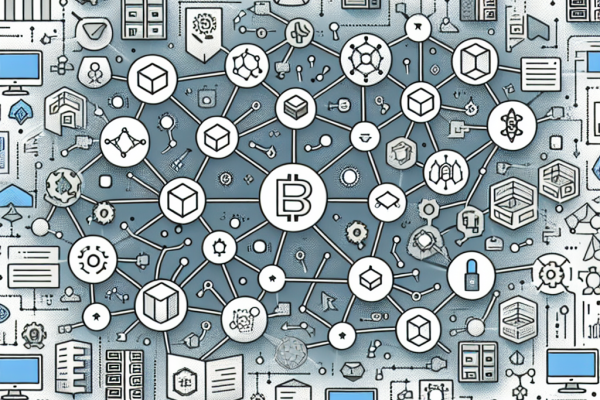
Overcoming Blockchain’s Scalability Hurdle: An In-Depth Analysis
The capacity of a blockchain to efficiently manage growing transaction loads, active participants, and increased usage is referred to as scalability. The efficiency of a blockchain can be impacted by numerous elements, including its level of decentralization, robustness against attacks, governance frameworks, mechanisms for advancement, storage requisites, and hardware demands.
Despite its many facets, the primary hurdle that continues to confront blockchain developers is scalability, and here are the reasons why.
The blockchain landscape is still in its nascent stages, leading to the ongoing resolution of numerous pertinent issues. The ability to manage varying transaction volumes without compromising security and decentralization is a key aspect of scalability within the context of blockchain. While striving to meet their objectives, most blockchain systems must often forgo one or more vital components, with scalability frequently being the area of concern.
To function seamlessly, maintain security, and manage all anticipated demands (particularly on a grand, global scale) as envisioned by certain blockchain projects, a public or distributed blockchain must embody the following characteristics:
- Decentralized
- Secure
- Scalable
Achieving a balance among these elements requires some compromise. A triangular model illustrates the interplay among these factors, showing how enhancing one can lead to a reduction in another. For instance, to bolster security and scalability, decentralization may need to be curtailed, and vice versa.
Rather than being housed centrally, decentralization involves distributing a blockchain across an expansive network. For instance, from August 22 to November 20, 2024, Bitcoin boasted an average of over 471,000 nodes globally, each autonomously updating the blockchain while running the same software. This extensive decentralization enhances Bitcoin’s security, although it results in limited scalability unless third-party solutions are introduced.
Blockchain security encompasses resisting unauthorized changes or attacks. In addition to programmable measures instituted by developers, decentralization is a significant security feature. The more dispersed a blockchain is, the more robust it becomes against attacks. For Bitcoin, the substantial participant base and rapid data processing enhance its security.
Scalability enables a blockchain to accommodate increased workload. The end goal is to achieve this without undermining security or decentralization. Specifically, for cryptocurrency blockchains, scalability equates to the number of transactions processed per second. Due to its high level of decentralization and security, enhancing the scalability of the Bitcoin blockchain requires external solutions. Since its 2009 public debut, scaling the blockchain has piqued the interest of many.
From 2014 to 2018, developers proposed increasing block sizes on the Bitcoin blockchain to facilitate more transactions. However, diverging opinions on the best method to balance scalability with security and decentralization led to several blockchain forks. Ethereum, often chosen for application development due to its scalability, had over 10 million nodes operating as of November 21, 2024, positioning it as possibly the most decentralized, secure, and scalable blockchain available. However, its capacity remained capped at approximately 15 transactions per second.
Blockchain’s Predominant Challenge
Scalability has perpetually stood out as the principal challenge in blockchain technology, as achieving it necessitates compromising on security and decentralization.
Exploring Blockchain’s Vulnerabilities
Although blockchain is celebrated for its resilience against interference and its efficiency in tracking ownership and data, certain blockchains demand substantial energy for operation, while others require centralized control with restricted access. In scenarios like decentralized payment systems, the reliance on extensive participant networks for security hampers scalability.
Not a recent innovation, blockchain has been in development since the 1990s. The effort of cryptographers, developers, and data scientists has yielded significant progress in addressing core issues such as scalability, decentralization, and security. While some projects have made strides in resolving these dilemmas, achieving a perfect balance remains a work in progress.
The Trials of Blockchain Technology
For organizations, private and permissioned blockchains present easier implementation and security management. Conversely, the public and permissionless versions require broad adoption to achieve security and speed. However, they often struggle to handle the burgeoning data loads, particularly in terms of increasing transaction volumes on payment networks.
You may also like
Archives
Categories
- Blockchain Technology
- Cryptocurrency
- Cryptocurrency Analysis
- Cryptocurrency Custody
- Cryptocurrency ETFs
- Cryptocurrency Investing
- Cryptocurrency Investments
- Cryptocurrency Payments
- Cryptocurrency Psychology
- Cryptocurrency Regulation
- Cryptocurrency Trading
- Cryptocurrency Trading Platforms
- Cryptography
- Cybersecurity
- Economics
- Healthcare Technology
- Insurance
- Investing
- Real Estate Law
- Retirement Planning
- Technology Supply Chain


